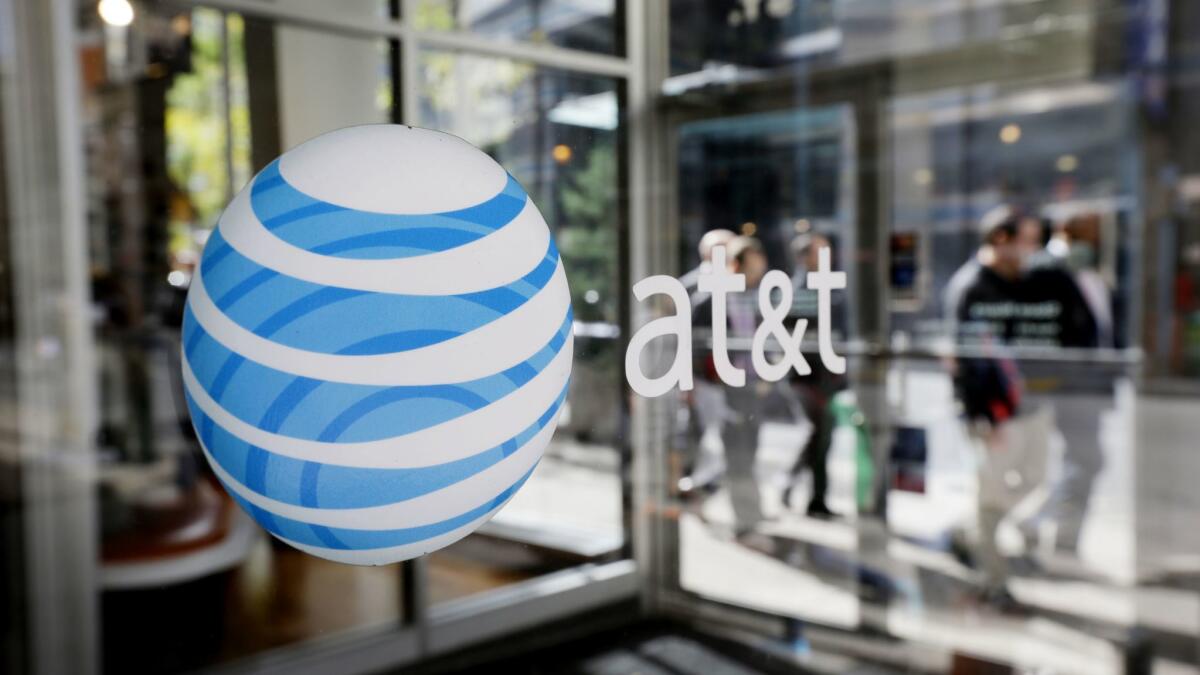AT&T shares fall as wireless, pay-TV subscriber numbers fail to meet expectations

AT&T Inc., in the middle of a high-stakes effort to turn itself into a media and entertainment juggernaut, finds itself playing catch-up in its bread-and-butter businesses of wireless and pay-TV services.
Two key measures, U.S. wireless and pay-TV subscribers, came in well below Wall Street predictions in the fourth quarter. That led to a shortfall in overall sales relative to analystsâ estimates. The stock fell as much as 5.5% Wednesday, the biggest intraday drop in three months, before gaining back some ground.
AT&T added a net 13,000 U.S. monthly wireless subscribers in the period, far under projections of about 252,000. A loss of 410,000 users of nonphone devices like smartwatches and tablets drove the disappointment.
AT&T fell victim in part to the same phenomenon thatâs bedeviling Apple Inc. and other phone makers: People are hanging onto their smartphones longer. The Dallas-based companyâs phone sales fell $500 million in the recent quarter due to sluggish upgrades, Chief Financial Officer John Stephens said on an earnings conference call.
AT&T also lost 658,000 U.S. pay-TV subscribers, compared with the loss of about 191,000 anticipated by analysts. The division, led by DirecTV, is continuing to lose customers to fast-growing online businesses, like Netflix Inc. Using content from Time Warner, AT&T is developing online businesses of its own, such as WatchTV, but those will take time to catch on.
AT&T shares closed the day down 4.3% to $29.37. The stock lost 27% last year, lagging behind the 6% gain of Verizon.
Sales rose to $47.99 billion, short of the $48.5 billion average of analystsâ estimates.
Even so, the figures look even worse in contrast with AT&Tâs biggest rivals in mobile services. Although Verizon Communications Inc. reported downbeat fourth-quarter sales on Tuesday, that company and T-Mobile US Inc. each gained 1.2 million new wireless subscribers in the quarter. AT&Tâs monthly defection rate, or churn, rose to 1.2% from 1.1% a year ago.
AT&Tâs âtop priorityâ is reducing its debt, Chief Executive Officer Randall Stephenson said in a statement, and its record free cash flow in 2018 will help that effort. The company had net debt of $171.3 billion at the end of the year, having taken on a heavy load to finance its Time Warner acquisition.
With that $85 billion purchase last year, AT&T is gambling that entertainment programming, delivered to home TV sets and to mobile phones, can spark its sluggish revenue growth. The completed merger is facing a court challenge by the Justice Department, though AT&T appeared to fare well in a December hearing.
More to Read
Inside the business of entertainment
The Wide Shot brings you news, analysis and insights on everything from streaming wars to production â and what it all means for the future.
You may occasionally receive promotional content from the Los Angeles Times.










